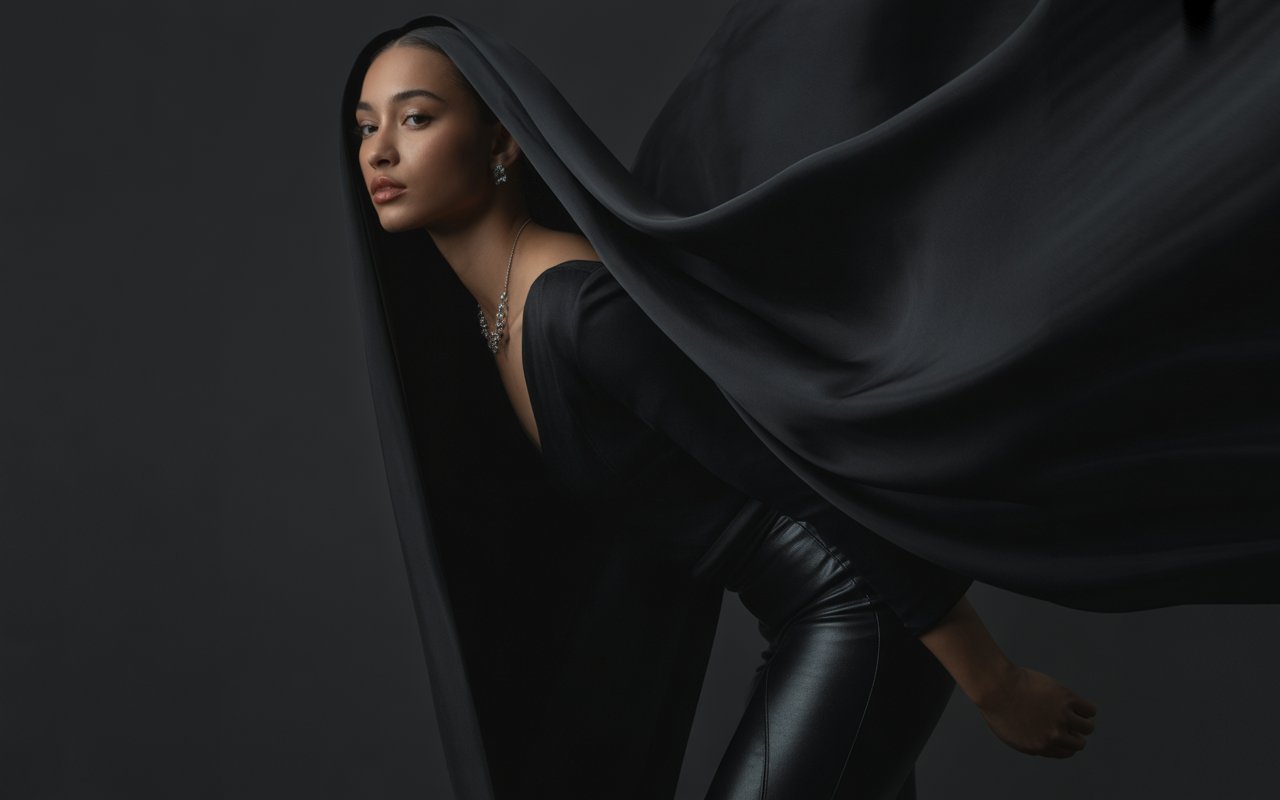When you think of black, what comes to mind first? Perhaps elegance, mystery, or even rebellion. Black has always been more than just a color—it’s a statement, a symbol, and sometimes, a story. From the flowing black dress that defines sophistication to the strength found in melanin-rich beauty, “beauty in black” carries layers of meaning that transcend fashion and skin tone alike.
In this article, we’ll dive deep into the many dimensions of beauty in black—its history, cultural symbolism, emotional resonance, and its modern-day interpretations in art, fashion, and identity. Get ready for a journey that uncovers why black isn’t just beautiful—it’s powerful.
The Allure of Black: More Than a Shade
Black has always been seen as the color of contrasts. It can signify both the end and the beginning, elegance and defiance, simplicity and depth. While some associate black with darkness or negativity, others see it as the purest form of sophistication—think of the iconic “little black dress” or a sleek black car gliding through the night.
In psychology, black often represents control, confidence, and independence. People who wear black are often perceived as powerful, mysterious, and self-assured. That’s why it remains a timeless color in both fashion and emotion.
A Color with Cultural Roots
Throughout history, black has carried profound cultural meanings across the globe.
-
In ancient Egypt, black symbolized fertility and rebirth—linked with the rich, dark soil of the Nile.
-
In Japan, black denotes mystery, experience, and wisdom.
-
In Western culture, black has been used for mourning, yet it’s also the go-to color for elegance and prestige.
The color adapts to every culture it touches, shaping how people perceive beauty and identity.
Beauty in Black Skin: Radiance and Resilience

When we talk about “beauty in black,” it’s impossible not to recognize the glow, confidence, and resilience of Black and brown skin tones. Melanin isn’t just a pigment—it’s a natural armor against time and sunlight, giving the skin warmth and depth that artists have celebrated for centuries.
The beauty of dark skin is found not only in appearance but also in heritage and pride. It tells a story of endurance and empowerment. For generations, people of African descent have redefined global beauty standards by embracing natural hair, deep tones, and authentic cultural expressions.
Today, models, influencers, and everyday individuals continue to challenge stereotypes, showing the world that beauty in black is not about comparison—it’s about self-celebration.
The Symbolism of Black in Fashion
Fashion and black have an unbreakable bond. When designer Coco Chanel introduced the “little black dress” in the 1920s, she changed the game forever. Suddenly, black became the color of timeless class, not just mourning.
From sleek tuxedos to contemporary streetwear, black has remained a favorite because it:
-
Flatters every body type
-
Blends elegance with mystery
-
Pairs effortlessly with every other color
As designer Yohji Yamamoto once said, “Black is modest and arrogant at the same time. Black is lazy and easy—but mysterious.”
In essence, black allows the person, not the outfit, to shine.
Black in Art and Expression
Artists have long used black to convey emotion, power, and depth. Painters like Rembrandt and Caravaggio mastered the art of contrast, using black to highlight light and evoke emotion.
In modern art, black represents infinity and possibility—a blank canvas waiting to be filled. Just as silence amplifies sound, black amplifies every color and feeling placed beside it.
Think of it this way: if life were a painting, black would be the shadow that gives the light its meaning.
The Emotional Depth of Black

There’s something profoundly emotional about black. It can reflect moods like introspection, strength, or peace. Many people feel comforted by black because it provides a sense of protection—like being wrapped in calmness amid chaos.
When you wear black or decorate with it, it often mirrors your mood: confident, reflective, or serene. It’s a color that doesn’t scream for attention but commands it quietly.
Black is the whisper that speaks louder than words.
Beauty in Black Hair: The Crown of Culture
Hair has always been a vital expression of identity, especially in Black culture. Natural hair—whether coiled, braided, or loc’d—isn’t just a style; it’s a cultural legacy.
For centuries, Black hair has told stories—of ancestry, resilience, and artistry. Every twist and braid carries tradition, creativity, and pride. Today, embracing natural textures is an act of self-love and resistance against unrealistic beauty norms.
There’s nothing quite like the crown that grows naturally—unique, strong, and beautiful in its authenticity.
Black in Design and Architecture
Designers and architects often use black to create drama, contrast, and depth. Black interiors feel bold and timeless, while black exteriors convey modern strength.
Just like in fashion, black in design represents clarity and focus. It strips away distraction, allowing structure and form to take center stage.
In minimalist design, black often symbolizes perfection in simplicity—proving that beauty doesn’t always need color; sometimes it just needs confidence.
Spiritual and Psychological Meaning of Black

Spiritually, black can symbolize protection, mystery, and transformation. It represents the unknown—the fertile ground from which new ideas and beginnings grow.
Psychologically, black offers comfort and privacy. People drawn to black often seek inner peace or control. It can serve as both a shield and a statement, balancing vulnerability with confidence.
When used with intention, black helps one reconnect with their strength, much like the night that nourishes the dawn.
Modern Movements and Black Empowerment
In recent decades, “beauty in black” has become a rallying cry for empowerment movements. From Black Lives Matter to Black Girl Magic, these movements celebrate the strength, creativity, and resilience of Black individuals worldwide.
Representation in media, fashion, and art has grown significantly. Icons like Lupita Nyong’o, Naomi Campbell, and Viola Davis continue to redefine beauty on their own terms.
The rise of inclusive brands and campaigns has also ensured that darker tones and natural features are celebrated, not hidden. It’s not just a trend—it’s a revolution of recognition.
The Timeless Power of Black and White
When black meets white, balance is born. The interplay of these two shades symbolizes duality—light and shadow, good and evil, life and death.
Together, they represent harmony. Neither color exists without the other, much like how joy is more profound after sorrow. This contrast reminds us that beauty often lives in balance, not extremes.
In design, photography, and fashion, the combination of black and white is eternal—a testament to simplicity done right.
Black as a Metaphor for Inner Beauty
Here’s a thought: what if black isn’t just about what we see, but what we feel?
Think of black as the night sky—vast, endless, and full of unseen stars. Just because you can’t see every detail doesn’t mean it lacks brilliance. Similarly, inner beauty isn’t always visible, but it radiates through confidence, kindness, and self-awareness.
True “beauty in black” lies not only in appearance but in how one carries themselves—with grace, self-respect, and authenticity.
FAQs About Beauty in Black
1. Why is black considered a symbol of elegance?
Because black is simple yet commanding. It conveys confidence, authority, and timeless sophistication without needing attention.
2. How has the perception of black skin changed over time?
Historically undervalued, black skin is now celebrated globally for its radiance and resilience. Representation and cultural pride have helped redefine beauty standards.
3. What does black symbolize in art and fashion?
In art, black represents depth and emotion; in fashion, it symbolizes class, confidence, and mystery. Both use black to emphasize contrast and clarity.
4. Is wearing black associated with certain personality traits?
Yes. People drawn to black often value independence, confidence, and self-expression. It can also reflect introspection and emotional depth.
5. How can one embrace beauty in black in daily life?
By wearing black confidently, appreciating its symbolism, and celebrating the beauty of darker tones in nature, fashion, and identity.
Conclusion: The Infinite Beauty in Black
So, what makes black beautiful? It’s not just its elegance or power—it’s its ability to represent everything and nothing at once. Black absorbs light yet allows beauty to shine through contrast. It symbolizes both strength and softness, visibility and mystery.
From skin tone to style, from art to emotion, beauty in black is everywhere—it’s timeless, universal, and deeply personal. Whether worn, lived, or embodied, black is not the absence of color but the presence of every possibility.













